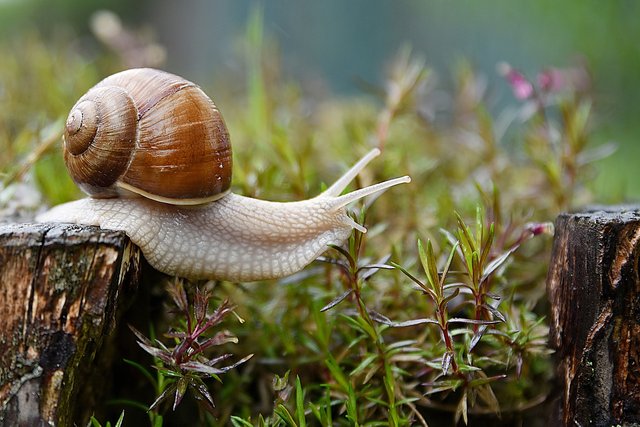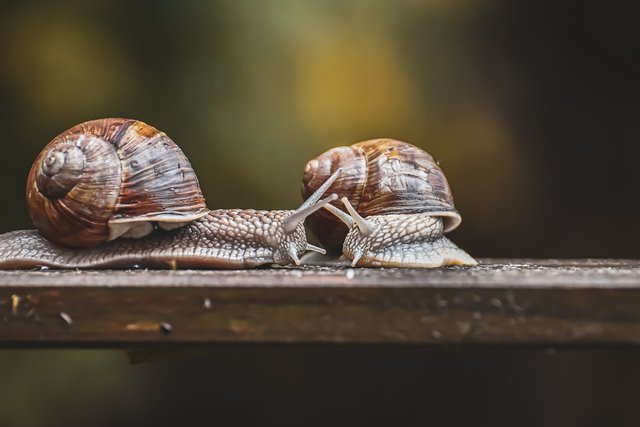
Snails, or gastropods, are soft animals that are generally equipped with spiral shells that protect their bodies. They belong to the mollusk group and can be found in various habitats, both on land and in water. Their shells are made of calcium carbonate produced by their own bodies, providing protection from predators and the external environment.
Snails have a long body consisting of a head, legs, and a body mass called the visceral part. Most snail species have eyes located at the long ends of a pair of tentacles. These tentacles function to sense the surrounding environment, including finding food and detecting danger.
In terms of food, snails are omnivores, although the majority are plant eaters. They use the radula, a serrated, tongue-like organ, to tear apart and chew food such as algae, dead plants, and other organic material. Some species are also predators, eating small animals or other animals that are smaller than themselves.
In addition, snails have the ability to cope with changing environmental conditions. They can survive drought by aestivation (summer sleep) in damp or muddy places. When winter arrives, they can reduce their activities and enter the hibernation phase to survive.
In the ecosystem, snails have an important role as primary and secondary eaters, as well as as prey for many predators, including birds, mammals and other animals. Their presence in a variety of habitats reflects their extraordinary adaptation to diverse environmental conditions around the world.

Snail Survival
Snails survive in various environments using several adaptive strategies. Their hard, spiral-shaped shells provide protection from predators and environmental hazards. Some species can retract entirely into their shells when threatened, using a muscular foot to seal the entrance.
Snails also possess a radula, a rasping organ used to scrape food, such as algae or decaying plant matter, from surfaces. Their ability to aestivate during dry periods and hibernate in cold weather further aids survival. These adaptations collectively ensure their resilience in diverse habitats worldwide.
Downvoting a post can decrease pending rewards and make it less visible. Common reasons:
Submit
Upvoted. Thank You for sending some of your rewards to @null. It will make Steem stronger.
Downvoting a post can decrease pending rewards and make it less visible. Common reasons:
Submit